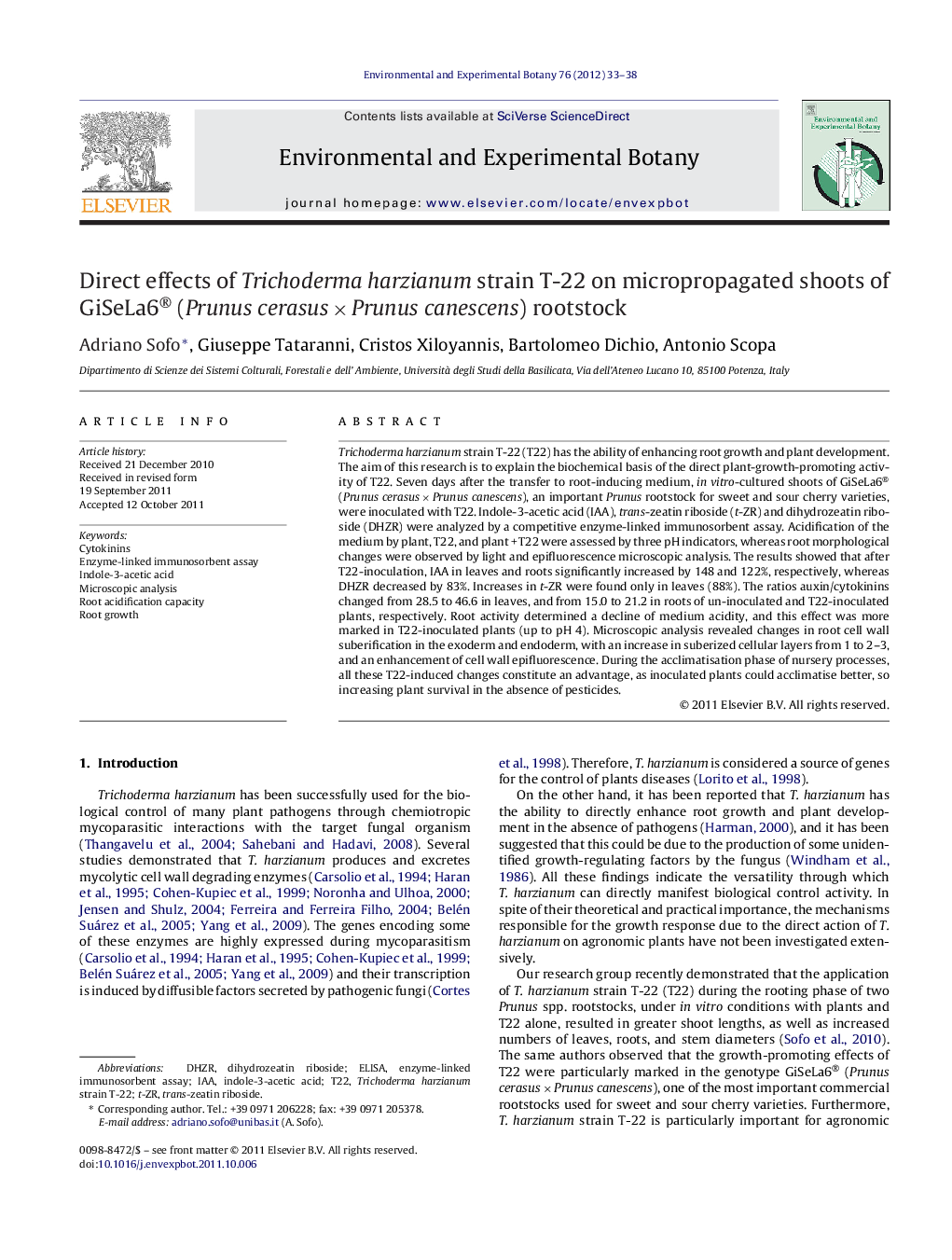| Article ID | Journal | Published Year | Pages | File Type |
|---|---|---|---|---|
| 4554720 | Environmental and Experimental Botany | 2012 | 6 Pages |
Trichoderma harzianum strain T-22 (T22) has the ability of enhancing root growth and plant development. The aim of this research is to explain the biochemical basis of the direct plant-growth-promoting activity of T22. Seven days after the transfer to root-inducing medium, in vitro-cultured shoots of GiSeLa6® (Prunus cerasus × Prunus canescens), an important Prunus rootstock for sweet and sour cherry varieties, were inoculated with T22. Indole-3-acetic acid (IAA), trans-zeatin riboside (t-ZR) and dihydrozeatin riboside (DHZR) were analyzed by a competitive enzyme-linked immunosorbent assay. Acidification of the medium by plant, T22, and plant + T22 were assessed by three pH indicators, whereas root morphological changes were observed by light and epifluorescence microscopic analysis. The results showed that after T22-inoculation, IAA in leaves and roots significantly increased by 148 and 122%, respectively, whereas DHZR decreased by 83%. Increases in t-ZR were found only in leaves (88%). The ratios auxin/cytokinins changed from 28.5 to 46.6 in leaves, and from 15.0 to 21.2 in roots of un-inoculated and T22-inoculated plants, respectively. Root activity determined a decline of medium acidity, and this effect was more marked in T22-inoculated plants (up to pH 4). Microscopic analysis revealed changes in root cell wall suberification in the exoderm and endoderm, with an increase in suberized cellular layers from 1 to 2–3, and an enhancement of cell wall epifluorescence. During the acclimatisation phase of nursery processes, all these T22-induced changes constitute an advantage, as inoculated plants could acclimatise better, so increasing plant survival in the absence of pesticides.
Graphical abstractFigure optionsDownload full-size imageDownload as PowerPoint slideHighlights► Inoculation of Trichoderma harzianum T-22 on micropropagated GiSeLa6® (Prunus spp.) shoots. ► Growth-promoting effects on both roots and leaves after nine days from inoculation. ► Changes in indole-3-acetic acid, dihydrozeatin, and trans-zeatin levels and ratios. ► Acidification of the medium and morphological root changes.
